Mike Copeland takes a sharp right onto Grand River Avenue in Brighton, shifts gears and punches the throttle of his cherry red 1948 Chevrolet pickup. It’s a warm, sunny day in early May, and the 67-year-old Copeland flies down the road with the windows wide-open to let in the wild, warm wind and deafening roar of the 500-horsepower engine.
You’d swear you were in a gasoline-powered hot rod leaving a trail of exhaust fumes. But Copeland’s ride is powered by hydrogen and oxygen, producing no carbon emissions from his tailpipe, only water that is so pure you could drink it.
“We’ve spent $1 million in developing a hydrogen tank and this engine,” Copeland bellowed over the hum of the engine. “But we solved issues that others have not been able to solve.”
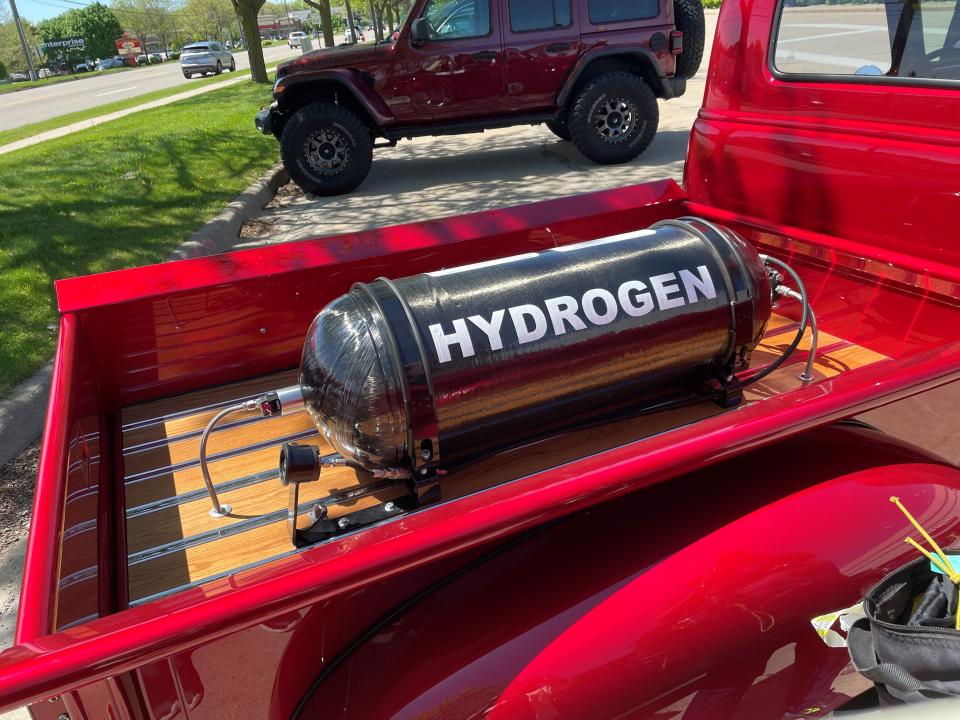
Copeland is CEO of Arrington-Hydrogen in Brighton. By “we” he means his team and his chief engineer, Al Butlin. Both Copeland and Butlin are retired engineers who worked together at General Motors. The issues they have solved center on getting extreme power from compressed hydrogen to propel internal combustion performance engines that haul butt. Most hydrogen-powered vehicles work best at steady and moderate speeds and require an extra boost from a backup engine for high acceleration.
Copeland’s company debuted his hydrogen-powered red pickup in 2021 at the SEMA show in Las Vegas and then proved its speed the next year, racing it there. After that, Copeland started getting calls that have not stopped.
“I’ve got people all over the world reaching out to me,” Copeland said. “Australia wants 1,000 cars done right now. They’re building a carbon zero airport, and the cars would be at the airport for support. Right now, we’re the only people who’ve run the carbon emissions test and have proof we’re zero carbon.”
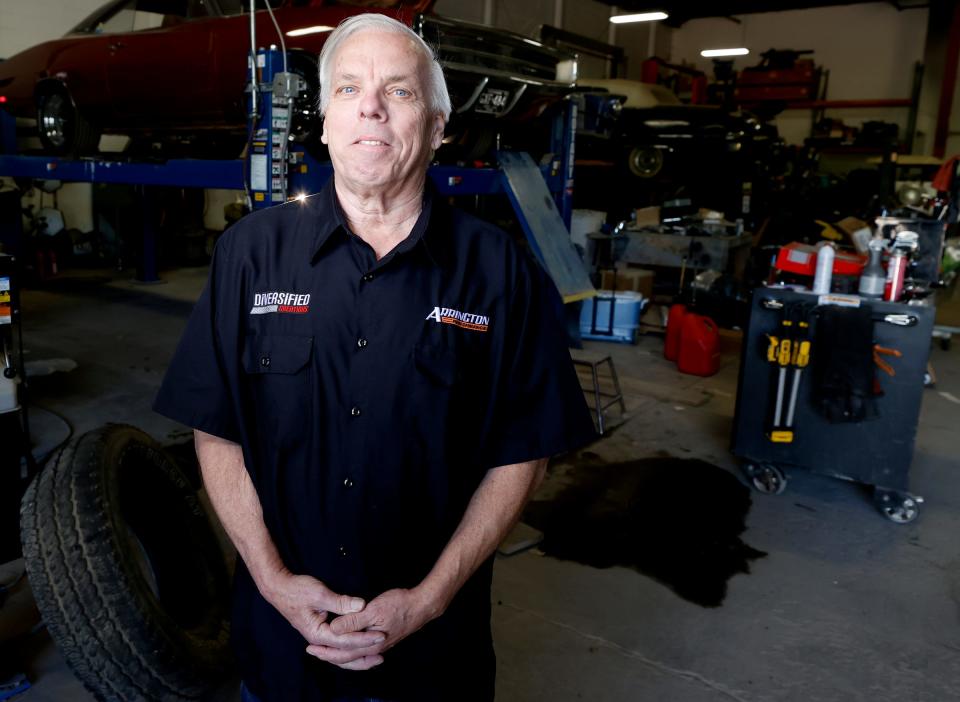

The testing, which the Free Press reviewed and verified, was completed at Roush Industries in Livonia. It showed the truck measured zero carbon and low nitrogen oxide levels. Nitrogen oxides are a family of poisonous, highly reactive gases that form when fuel or hydrogen is burned at high temperatures, according to the Environmental Protection Agency.
A history of ingenuity at GM
Copeland said he does not have a timeline for submitting his results to the EPA because he thinks he can get the numbers even lower. But by later next year, Copeland said he will be ready to start selling his hydrogen conversion kits to certified shops that will convert tens of thousands of gasoline-burning fleet vehicles to hydrogen to achieve zero emissions. It is a business he believes is “going to be massive.”
Copeland’s talent for finding new ways to do things stems from his 26 years working at GM, he said.
He started at GM in 1985 as a skilled trades employee who hand built prototypes in Cadillac’s engineering division. Later, he worked at GM’s former engineering and development center in Flint called Great Lakes Technology Assembly. There, he developed electrical systems in prototype cars.
“Everything we built was experimental and preproduction,” said Copeland, who has a degree in mechanical engineering from Baker College in Owosso.
At GM, Copeland also worked on advanced vehicle integration, which means he helped build the initial suspension system, engine or architecture on a vehicle and then tested it. Starting in 2004, he was the project manager of GM Performance Division, a job he held until he retired in 2011.
Simultaneously, from 2004-11, he and his wife opened Diversified Automotive Creations in Brighton, a performance and off-road parts and accessories showroom they still own, where he knows many of his customers by name.
“How ya doin’ Mark? You push that head gasket up?” Copeland asked a customer in early May as he helped carry out a box of parts.
Saving classic cars for a grandson
Copeland’s use of hydrogen is not new. Many automakers, including Honda, Hyundai and Toyota have offered hydrogen fuel cell vehicles for sale in recent years. Toyota has been the most devoted to hydrogen and has sold about 14,300 hydrogen fuel cell Mirai sedans across two generations in the U.S. since 2015, according to Car and Driver, which noted Toyota had to substantially discount them at times to sell them.
Ford recently said it is doing a hydrogen pilot program with the Transit. In March, General Motors said it is starting a pilot program that demonstrates real-life applications of hydrogen fuel cells for fleet and commercial customers of medium-duty work trucks.
The difference between hydrogen fuel cell vehicles and hydrogen-burning ICE engines is in a fuel cell vehicle the hydrogen is burned as it passes through a fuel cell to generate electricity. That electricity is used to recharge a battery pack, which then drives electric motors to make the car move. In Copeland’s cars, the hydrogen is injected into the engine the same way gasoline is in an internal combustion engine car to power it and propel the vehicle. His program is intended for existing vehicle conversion whereas others who are working on hydrogen-powered vehicles, such as automakers, are intending it for new vehicles.
Copeland’s inspiration to experiment with hydrogen to power performance engines started with his baby grandson some four years ago.
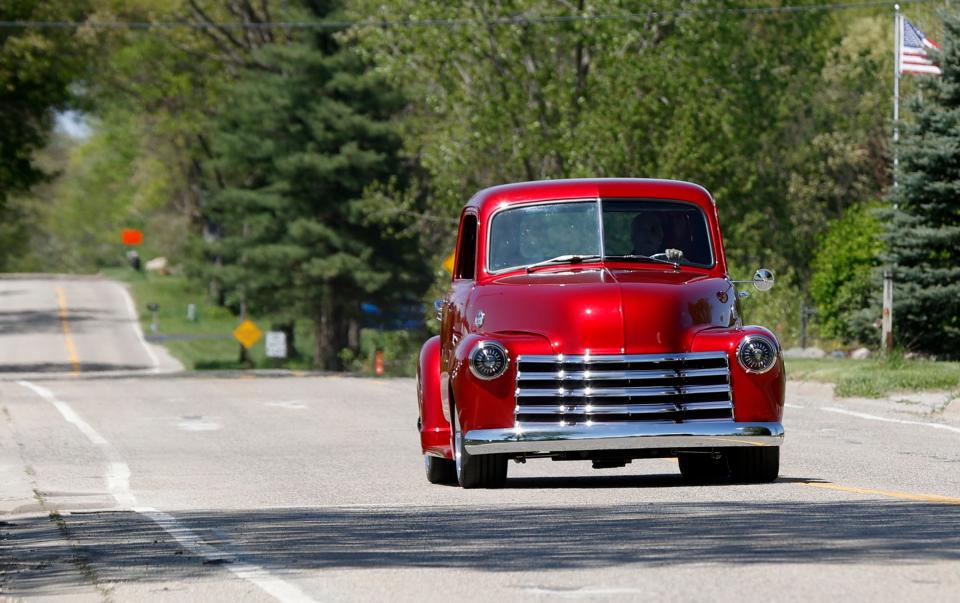

Copeland, a dedicated hot rodder, and his wife share a collection of 20 classic cars. They wanted their grandson, who is now 6 and who loves cars, to be able to drive their classics one day. But given the aggressive push by regulators and most automakers — including Copeland’s former employer GM — to go all-electric in the next decade, he and his wife worried the gasoline used to fuel their cars may not be around when the boy grows up.
“When you look at what’s going on in the auto industry, all the carbon and emissions, I feel unless there’s a major change, he may not be able to drive gasoline cars by the time my grandson turns 16,” Copeland said.
Why hydrogen is better than electric
As the Free Press reported in 2021, there has been a growing trend of shops popping up to convert classic cars to battery electric. The cost to turn a classic car into an EV can top $100,000, depending on the car, how much driving range a customer wants and amenities.
For Copeland, converting his hot rods to electric wasn’t the solution he sought. He preferred hydrogen, arguing it can be a greener solution than a battery electric vehicle.
“Green hydrogen can be made with wind or solar, made from plants or capturing heat and extracting energy from the heat and creating hydrogen from it. Hydrogen is the most abundant element known to man,” Copeland said. “It requires no precious metals and you don’t have to mine for the materials like you do to make battery packs.”
Also, Copeland said a driver can fill a tank with hydrogen in the similar fashion and five-minute time frame as they do now with gasoline, rather than waiting for an EV to charge. It also keeps the internal combustion engine, with all its glorious revving sounds, intact. When the vehicle’s lifespan is over, there is no battery to recycle or discard. Plus, Copeland believes hydrogen conversion would one day be less expensive than electric.
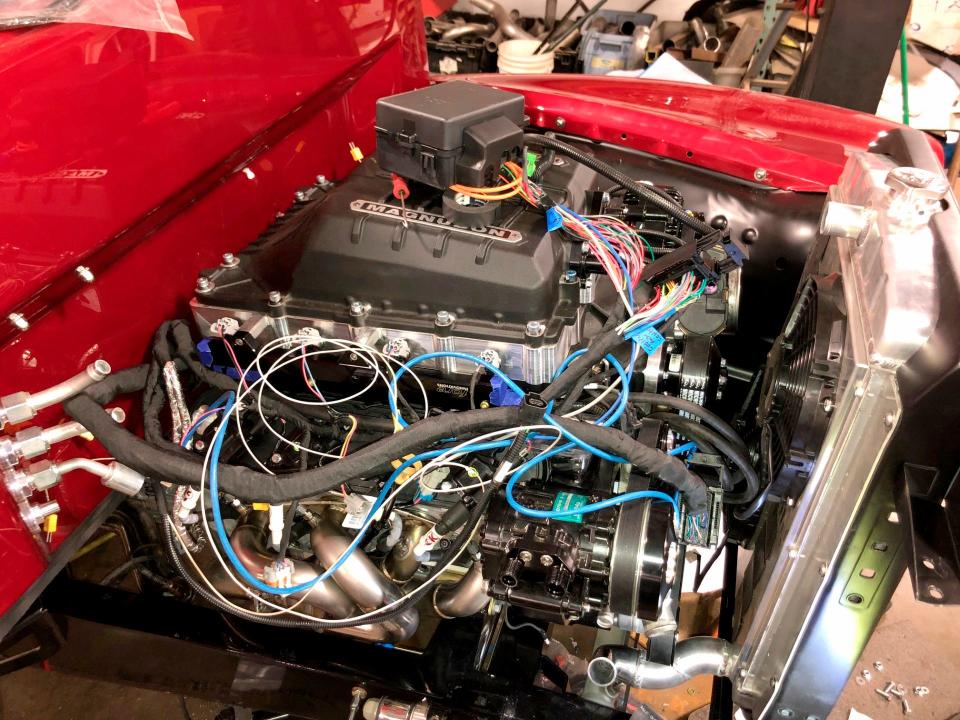

“Our goal is that, to convert it, would be less than a quarter of the price of replacing a vehicle,” Copeland said. “It won’t be inexpensive by normal people’s standards, but it will be considerably less to do a conversion from gas or diesel to hydrogen than to replace a 3- to 5-year-old battery pack in an electric vehicle.”
Experts have estimated that the average cost to replace an older, used lithium ion battery could cost half of the EV’s value. So for a $30,000 EV that would be about $15,000. But EV proponents have said that often the entire battery does not need replacing, just one or two modules might, and that is considerably less.
More cars hydrogen conversions
It took nearly a year of work for the Arrington team to modify the 6.2-liter engine from a 2014 Cadillac CTS-V that powers the 1948 Chevrolet pickup so that it worked with the 3-kilogram tank of hydrogen in the truck’s bed. It cost nearly $1 million to do it because parts were so expensive. For example, one injector to feed hydrogen to the engine cost $20,000. Copeland needed 16 of them. Today, the cost of an injector has dropped to less than $400 each, he said.
He debuted the 1948 pickup at the SEMA show in Las Vegas in 2021. He fine-tuned it and came back to the show a year later to race it. “We were the first hydrogen-powered (internal combustion engine) to ever compete in a race series in North America,” Copeland said. “We did not win. But we had a darn good showing.”
He got people’s attention. Most did not believe that hydrogen alone could produce such power, given that most hydrogen fuel cell vehicles on the market now have a high-voltage low-capacity battery in them for backup power for short periods of intense acceleration, according to Car and Driver. His vehicle does not have that battery.
“I wanted to prove that we could actually make a performance vehicle and compete on hydrogen,” Copeland said. “We had hundreds of people crawling under the truck looking for a gas tank. They didn’t believe it ran on hydrogen.”
Since then, the company also converted a 1964 Falcon with a Mustang GT engine in it to burn hydrogen that debuted at SEMA in 2022. It then built a Monster truck that runs on a Dart Super Charged Big Block engine powered by hydrogen. That debuted at SEMA in 2023.
“It makes 1,000-horsepower on it right now, but the goal is to get it to 1,500,” Copeland said. “Most Monster Truck rallies are in stadiums and create a lot of carbon monoxide. But on hydrogen, that problem ceases to exist.”
The truck is being driven by Team Throttle Monster and it will be featured at Monster Jam events later this year to show it off with the goal to start competing with it in the series in 2025, Copeland said.
Public hydrogen fueling only in California
Copeland has been approved by the state to fuel his hydrogen vehicles at Michigan Alternative Fuel Center in Grand Blanc for about $27 a kilogram, he said. He can get 200 to 250 miles on a tank, he said.
Hydrogen has drawbacks, namely its lack of availability, said Sam Abuelsamid, principal analyst for transportation and mobility at Guidehouse Insights in Detroit. In the United States, all the public hydrogen fuel stations are in California, which has 53. It is sold by the kilogram, and at True Zero, California’s largest hydrogen fuel retailer, it was about $36 a kilogram as of September 2023. One kilogram has roughly the same energy as 1 gallon of gasoline, Abuelsamid said.
And while hydrogen may be the most common element on Earth, it’s never found in its pure state and only a fraction of it today is made using solar or wind — an expensive process, Abuelsamid said. The bulk of it is made using high-pressure steam to heat methane that splits into carbon dioxide, hydrogen and carbon monoxide to then be made into compressed hydrogen. That process produces greenhouse gasses, Abuelsamid said.
Also, water isn’t the only thing that comes out of the exhaust when using compressed hydrogen: There are trace amount of nitrogen oxide emissions too. Fuel cells produce only water vapor, he said, so depending on the application and size of the engine, a hydrogen-powered internal combustion engine might need nitrogen oxide after-treatment similar to those used on diesel engines, raising the cost, Abuelsamid said.
But if demand for hydrogen grows, so will the use of solar or wind power to make it, Abuelsamid said. There are cases where hydrogen makes better sense than battery electric. When it comes to light duty cars, battery electric is a better solution, he said, because with modern batteries you can get as much range as you can with a hydrogen vehicle. At the end of life, the batteries will be recycled, he said, solving those environmental concerns.
But as vehicles get larger and heavier, than hydrogen makes more sense than adding thousands of pounds of lithium ion batteries to such vehicles, Abuelsamid said.
“I fully understand what he wants to do and why he wants to do it, and I support it,” Abuelsamid said. “But from a realistic standpoint, having compressed hydrogen available at every gas station in the next 25 to 30 years is an extremely small to nonexistent chance.”
Both agree there is no silver bullet answer to achieving total carbon neutrality and the reality of ease of performance.
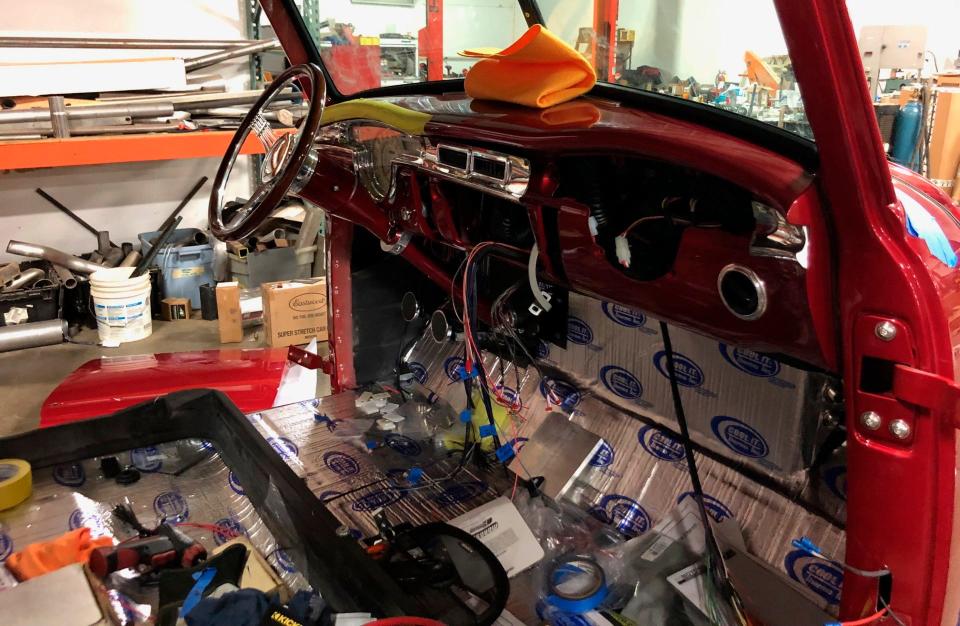

“In my opinion, electric has its place and works well in certain applications,” Copeland said. “But I go to Indianapolis every year for an auto event and I usually tow a car. It’s about 250 miles. If I took a Ford electric truck and put a car to tow it, I’d have to charge it three times to get there. In my diesel truck, it’s a tank of fuel. With a hydrogen truck, I’d do a bigger tank and carry more hydrogen and if I had to stop it’s a five-minute fill.”
More: GM’s key to EV production and profits rest on ramp-up of new battery cell plants
More: Stellantis joint venture to sell Chinese EVs in Europe, other parts of globe
Contact Jamie L. LaReau: [email protected]. Follow her on Twitter @jlareauan. Read more on General Motors and sign up for our autos newsletter. Become a subscriber.
This article originally appeared on Detroit Free Press: Retired GM engineer shows how hydrogen can power performance cars
Source Agencies


